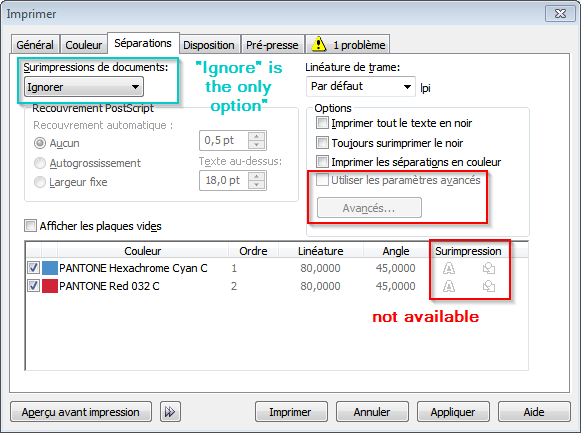
- Color separation in coreldraw x7 how to#
- Color separation in coreldraw x7 portable#
- Color separation in coreldraw x7 software#
- Color separation in coreldraw x7 professional#
Next, import the photo of the Banana Leaf: File > Import or CTRL+I.To edit the fill color, double-click the Fill color swatch in the Status bar and edit the color value). Select the page frame and fill with a dark green color (in this case, C100 M30 Y100 K25).or CTRL+N), go to Layout > Page Setup and click on ' Add Page Frame' (A page frame can also be added by double-clicking on the Rectangle tool in the Toolbox). This example will be done using the A4 format (210x 297mm) with 3 photos: a half peeled banana, a banana leaf and a vitamin cup.The fonts used in our project are: In this example we will create a fake poster that, in addition to halftone effect, will also have drop shadows applied, a gradient effect to outlined text, and the PowerClip feature that allows us to place decorative elements inside fonts and/or objects. One of these features is the halftone effect which can be used as an image background to emphasize the main figure. PowerTRACE makes the image vectorization process simple, accurate, and customizable, using artificial intelligence tools to help you get the job done.How to apply a halftone effect as a photo background and other cool effects using CorelDRAW X7 by Silvio GomesĬorelDRAW X7 offers great tools for applying interesting effects that can really highlight the look of your art work.
Color separation in coreldraw x7 how to#
Below is a simple step-by-step guide on how to convert to a vector.
Color separation in coreldraw x7 software#
Vector tracing requires software tools to convert elements of a pixel-based raster image into a series of mathematically plotted lines and shapes–the data required for a vector file.ĬorelDRAW provides the tools you need to vectorize an image. Vectorizing an image is commonly known as vector tracing. While vectorizing highly detailed photos may not always be practical, you can create usable vector images by extracting the best aspects of the image. This makes the file usable in your design and more practical for multifunctional applications. Often, as a vector designer, it’s necessary to convert a raster image asset into a vector format.
Color separation in coreldraw x7 portable#
Large files can limit storage and sharing ability and require enhanced computer processing speeds, which make high-quality raster images challenging to work with.Īlternatively, when you use a vector image format, there is much less data to store because images are converted to mathematically-based formulas, creating much smaller and portable files.
Color separation in coreldraw x7 professional#
That’s why professional photographs tend to be huge files higher quality means more pixels. Raster files tend to have large file sizes because the image data is stored as millions of pixels per image. While these image files are common, there are some limitations. Some of the most common raster image formats are:

Scalable vector graphics (SVGs) are also required for print and cut machines, such as the Cricut personal laser cutter, allowing the machine to read and execute the file information accurately.Īs a designer, you’ll work with a variety of file formats. Embroidery machines, for example, require vector images to configure a map of stitches properly. With the vector format, your client can use the same design file for large projects, including billboards and banners, and small projects like apparel embroidery and business cards.Įven when resizing isn’t required, there are other applications where only vector graphics are compatible. Using a Vector format allows you to create striking images that are scalable with zero loss in quality. Why Convert from Raster to Vector?īefore jumping into the process of how to vectorize an image, let’s quickly re-examine the benefits of using vectors. When life gives you raster images, here is what you need to know about vectorizing them. The mathematical proportions allow scalability without losing image quality, making vector images best suited for most graphic design applications. Vector graphics, on the other hand, store the same data as a set of mathematically defined points, lines, or shapes. This loss of image quality comes from the file type, which stores image data as pixels. Raster images can be used in many scenarios, but can become pixelated or blurry when resized.

What does it mean to vectorize an image? It’s a simple file conversion, but to help you better understand the process, we’ll break down the two categories of image file formats. That’s when you’ll need to know a little more about the process of vectorizing an image.

If you’re lucky, it will be a compatible file, but the format you’re given to work with often needs a little tweaking. But sometimes, a client asks you to incorporate existing files into your design. When starting from scratch, it’s generally easy to design in a vector file format. Vectorizing Images: Why and How to Vector TraceĪs an aspiring graphic designer or illustrator, you know the importance of having crisp, clear, and versatile image files.


 0 kommentar(er)
0 kommentar(er)
